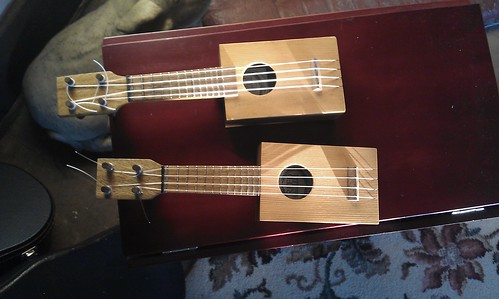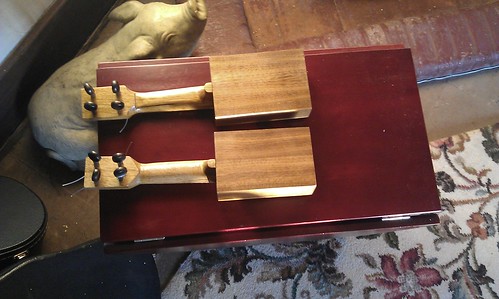Kinda. If the scale length is 7" the string length is 7"+compensation.
Up to a point! I calculated the frets for a 7 inch scale, but then used a floating bridge to make my life easier. The bridge is at the point on the soundboard which gives me a reasonably accurate octave at the 12th fret, which is a fraction more than 7 inches from the nut.
As with any instrument, you are making trade-offs between aesthetics and playability. I can tell you that a 7 inch scale with a 1 inch nut is as small as an average player can manage, and even then it's not possible to make all the chord shapes - you have to develop cheats/workarounds.
I'd say you start with the scale length. That gives you the limits on the overall size of the instrument - it must be large anough to accommodate that scale, give you enough soundboard to make a noise, attach the strings, and so on.
Then you can decide how you want it to look. But that requires trade-offs as well - for example, the headstock on my baby ukes is in the way for some open position chords. But it would have looked really odd if I'd extended the thin part of the neck between the nut and the headstock, so I lived with the trade-off. I could have made the neck join at the 15th fret, but then (a) it would have looked unbalanced and (b) there would be less soundboard, thus quieter. Joining at the 8th fret would give me a larger body, but again the balance would have been off. So I chose the 12th. These are just examples of the kind of choices you need to make. Different body shapes would give you different answers (maybe a triangular body joining at the 8th would look good?).
If you are planning to build a sub-soprano uke I'd suggest you work somewhere in the 9 to 11 inch scale. This will still look tiny, but be large enough that you can play most of the common chords. A nut width of at least 1 1/8 inch would be good - this makes an enormous difference to playability. 1 1/8 would look too fat on a 7 inch scale, but should be OK at 9 inches. For an 11 inch scale you could go up to 1 1/4!
One way to at least estimate how playable the result would be is to capo an existing uke at roughly your desired scale length (pencil + elastic band will do this). I just took a soprano and discovered that a capo at the 4th fret is roughly an 11 inch scale. For a little over 9 inches, capo at the 7th. Then try playing, but remember you will want to make the neck narrower to keep your proportions pleasing.
Your best bet is simply to put pencil to paper and draw it out. Use the stewmac fret calculator to work out where the frets go for a given scale length. It will even give you a rough guide as to the compensation.
Definitely!




